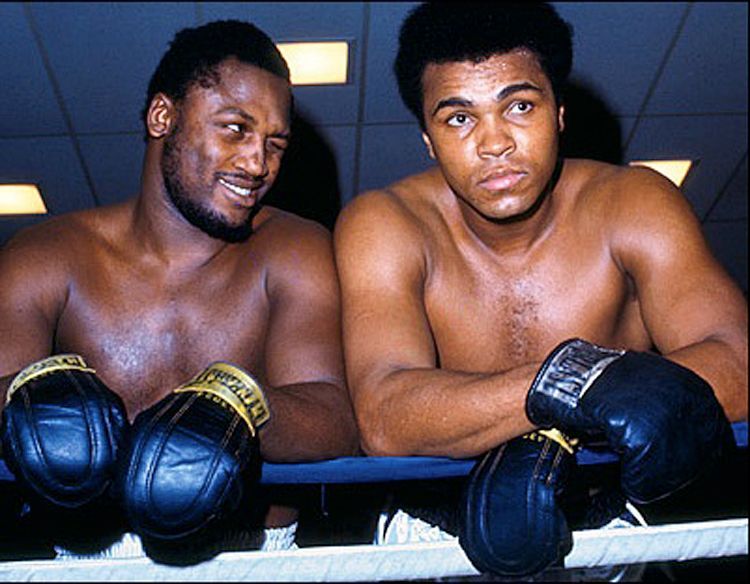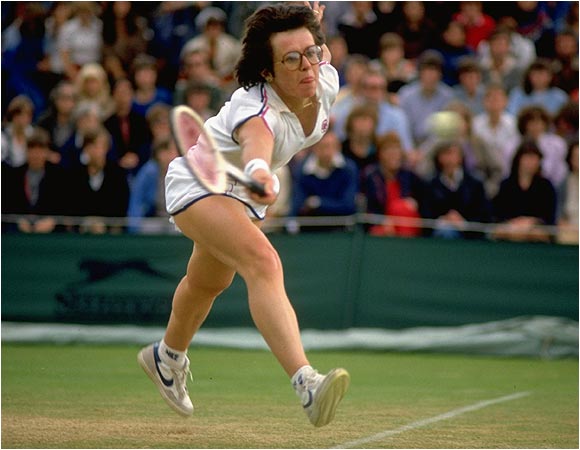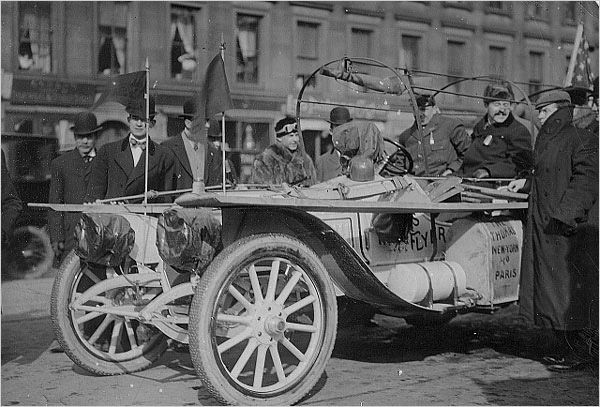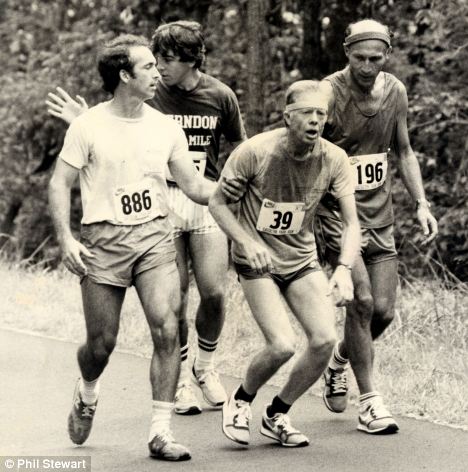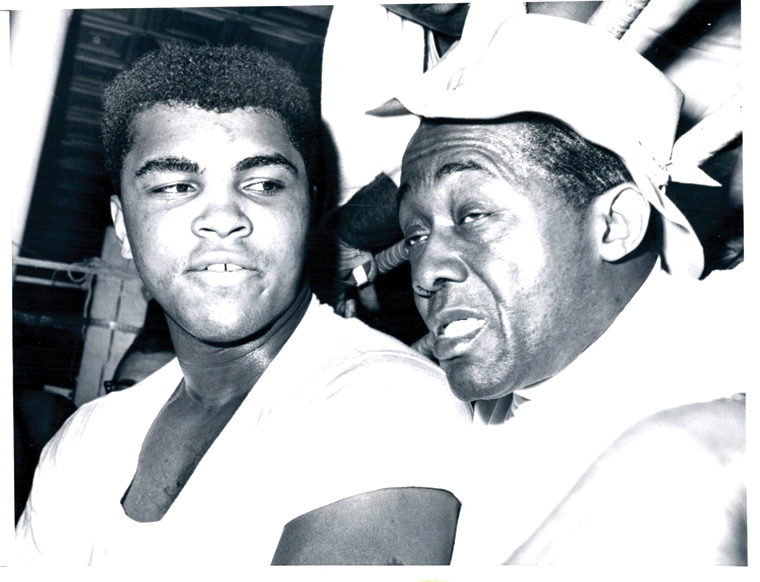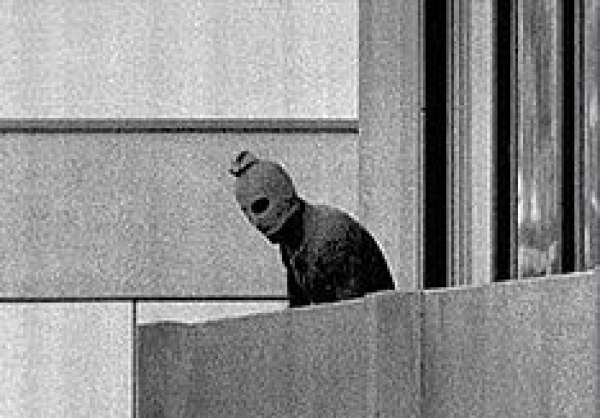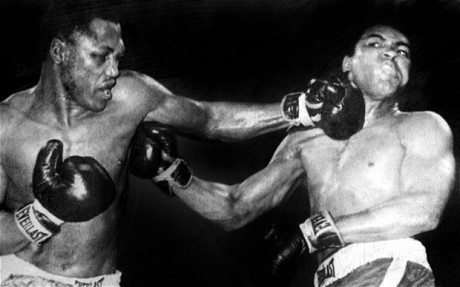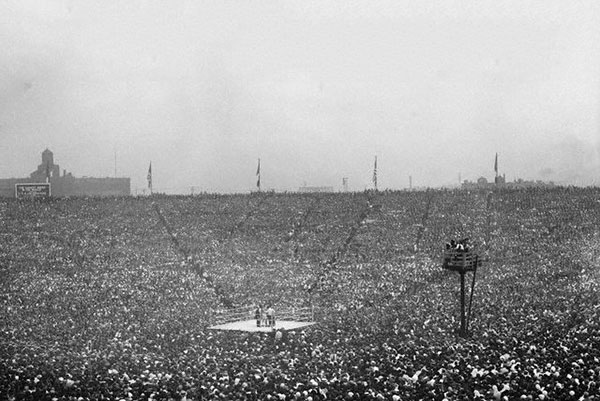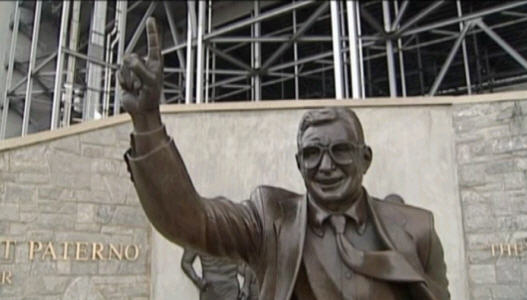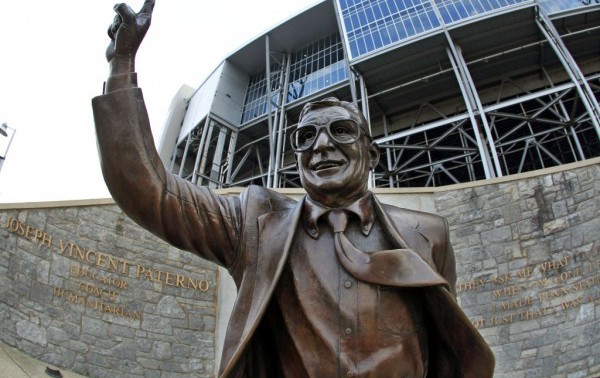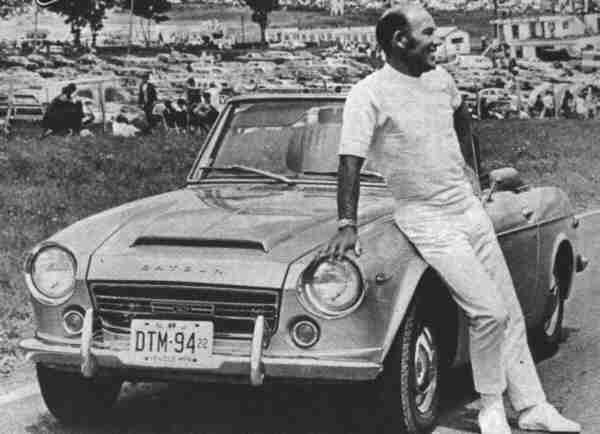
Basketball is the one major sport without antecedent that America invented, the handiwork of Dr. James Naismith, who realized in 1891 that peach baskets could be repurposed. Sean Newell of Deadspin has a post about the notes Naismith wrote after watching the first ever basketball game. It wasn’t always clear, for instance, that the game should begin with a jump ball. The transcript from the auction site that handled the papers:
“The First Game
When Mr. Stubbins brot [sic] up the peach baskets to the gym I secured them on the inside of the railing of the gallery. This was about 10 feet from the floor, one at each end of the gymnasium. I then put the 13 rules on the bulletin board just behind the instructor’s platform, secured a soccer ball and awaited the arrival of the class. I busied myself arranging the apparatus, all the time watching the boys as they arrived to observe their attitude that day. I felt that this was a crucial moment in my life as it meant success or failure of my attempt to hold the interest of the class and devise a new game.
I had neither the advantage of age nor the benefit of experience to help me put this across. But I did then what I have found universally successful since. I gathered the class around the platform and frankly stated the difficulties confronting me-telling them how I tried my best to give them the kind of work I thought suitable for secretarial students, frankly stating that I had made a failure of my attempts to modify games but told them that I had an absolutely new one and asked them to give it a trial assuring them that I thought it would be good.
The class did not show much enthusiasm but followed my lead. I lined them up, called the roll and asked T.D. Patton & E.S. Libby to step out and divide the class into two teams. I then explained what they had to do to make goals, tossed the ball up between the two center men & tried to keep them somewhat near the rules. Most of the fouls were called for running with the ball, though tackling the man with the ball was not uncommon.
If we had rules there must of necessity be some one to interpret and enforce the penalty. Two officials were appointed, one to watch the play with the ball, the other to watch the actions of the players & call the fouls.
We were ready to try out the game but as yet had no goal. I went to Mr. Stubbins, the supt. Of the building, and asked him if he had a couple of boxes about 18 inches square, as I had concluded that the goal must be small enough so that a goal could not be made at every attempt. He replied, ‘No,’ and after a moment’s hesitation he said, ‘I’ll tell you what, I have a couple of peach baskets about that size if they will do you any good.’ I asked him to bring them up to the gym floor-I nailed them to the gallery one at each end and the equipment was ready.

First court, Springfield, Massachusetts, 1891.
We now had a team game with equipment and an objective. The next question that arose was how are we going to start the game? I reviewed the games and found that the intent of the start was to give each side an equal chance of obtaining the ball. In water polo the teams were at each end of the pool and the ball was thrown into the center. I felt that this would not do as two teams rushing at each other would at least make for roughness. The plan of soccer was dismissed as it gave too much opportunity to keep the ball in the hands of the thrower’s team, thus giving them a decided advantage.
I then recalled the method of putting the ball in play in Eng. Rugby when the ball had gone over the side lines. The forward lined up in a row perpendicular to the side line, the teams opposite each other. The umpire with his back to the field threw the ball in between these lines with no chance for determining who would receive it.
I then thought of lining the teams up across the center of the floor and tossing it in between these lines. At this point I had a sickening feeling in the pit of my stomach caused by the recollection of events that occurred in such a play. When one of our opponents saw that the opposite side secured the ball he would arrange things in such a way that as the player descended with the ball in his hands over his head his shoulder, elbow or knee was in the spot where his stomach was landing. This again made for roughness.
I then thought that if two men were selected to jump for the ball that it would eliminate roughness and give each side an equal chance.
Again a problem presented itself and no solution appeared. By what line of association it occurred I do not know but I was back in Bennie’s Corners, playing duck on the rock. The whole scene came before me–across the road that led to Walter Gardner’s home was a large rock higher than our knees & larger than a washtub. On this rock one or more would place their ducks-a rock twice as large as our fists. The rest of us stood behind a line about ten feet away from the rock. The object of the game was for ‘it’ to tag one of the boys who was retrieving his duck. He could do this only when his duck was on the rock. It was the object of the men behind the line to knock ‘its’ duck off the rock when he would need to replace it before he could tag anyone.
In throwing at the duck on the rock, I recalled that at times we would throw our duck as hard as we could & thus knock his away some distance. If, however, we were all back of the line and ‘it’ was ready to tag us we would throw our duck in a curve so as to knock his off & ours would fall on the near side & thus be easily retrieved. In this other case the duck was thrown in a curve and accuracy took the place of force. The idea occurred to me that if the goal was horizontal instead of vertical the player would be compelled to throw in a curve and force which made for roughness would be of no value. I then concluded that the goal into which the ball should be thrown would be horizontal. I then thought of a box, somewhat resembling our old rock, into which the ball should be tossed. It then occurred to me that the team would form a nine man defense around the goal & it would be impossible to make a goal. The shot would need to be highly arched to win any chance of entering the goal.
It then occurred to me that if the ball did not need to reach the ground the defense would be useless in that condition. I then thought of putting the goal above the heads of the defense & their only chance to prevent a goal was to go out & get the ball or prevent his opponent from throwing to the goal.”


